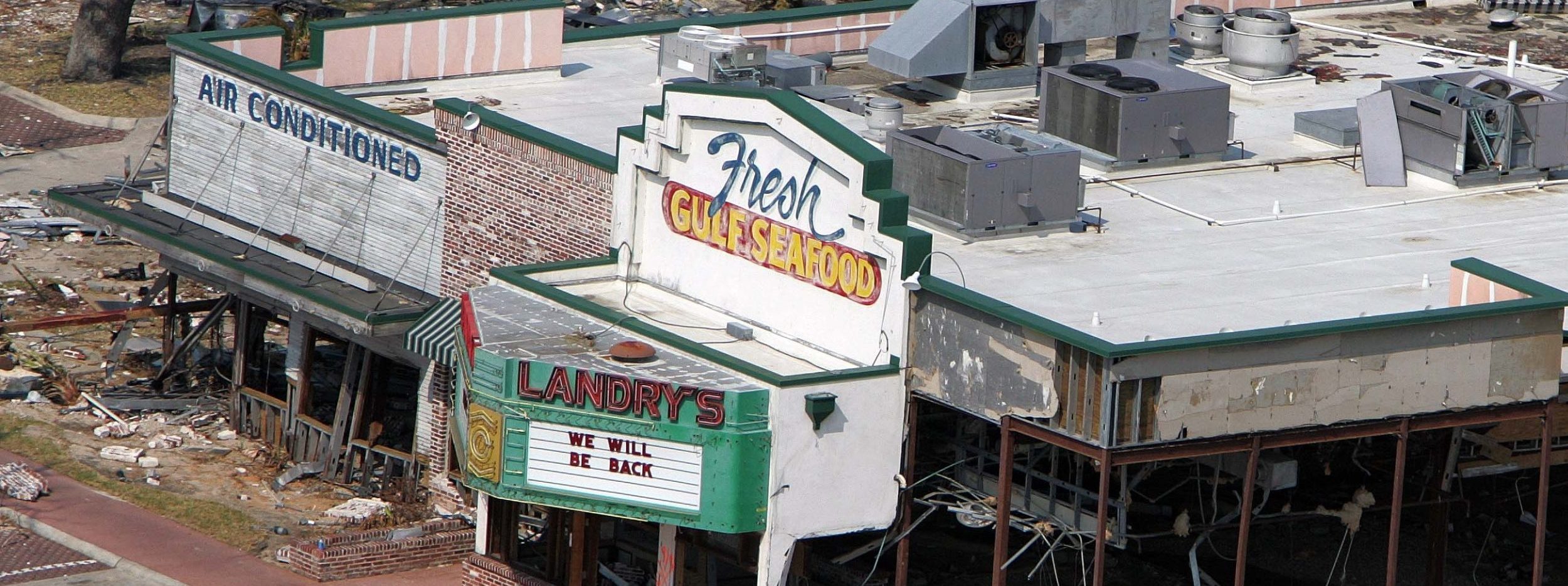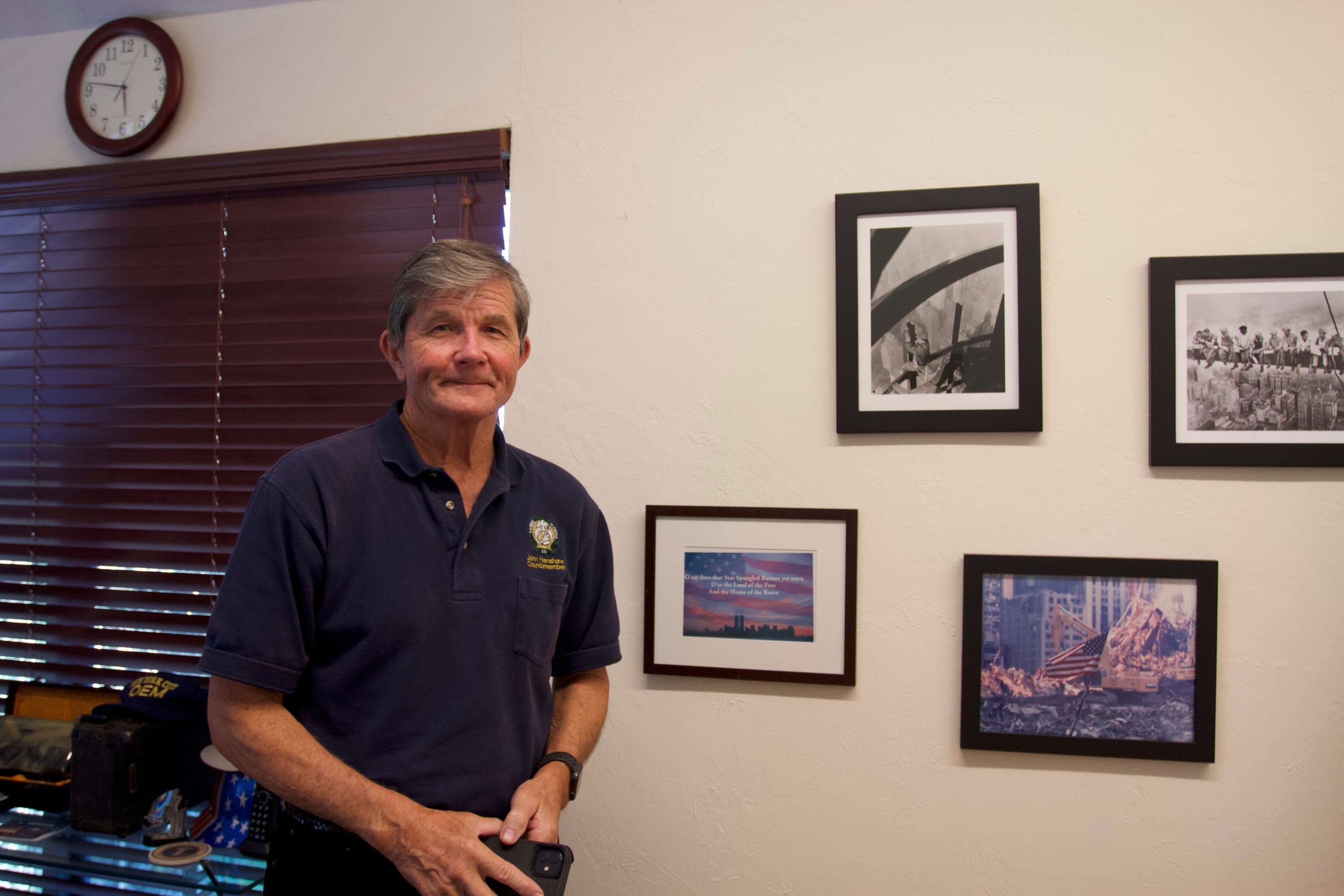
Government, Immigration
Birth of an OSHA policy
With terrorism in mind, the U.S. Occupational Safety and Health Administration created a policy to oversee companies that clean up and build anew after disasters. Decades later, it’s failing to protect workers who respond to climate-fueled catastrophes.
This article was produced in partnership with Columbia Journalism Investigations and the Center for Public Integrity. It was co-published by Futuro Investigates, a division of Futuro Media.
John Henshaw didn’t know the legacy he would create in 2001, when he helped oversee the government response to the Sept. 11 terrorist attacks. Then the head of the U.S. Occupational Safety and Health Administration, which monitored disaster rescue workers’ exposures to dangerous toxins while toiling among the World Trade Center building debris, he made an agreement with the four companies cleaning up the site.
OSHA wouldn’t penalize the companies for workplace health and safety violations. Instead, the agency would provide guidance on how to quickly remedy any issues; in return, the companies would immediately fix the infractions.
The 9/11 agreement spurred an emergency-response policy at OSHA governing how it monitors the health and safety of restoration workers who clean up after disasters –– including the hurricanes, floods and wildfires accelerated by climate change.
This decades-long approach was meant to expedite solutions and protect workers, Henshaw said. He believed that suspending OSHA’s enforcement mandate would enable its inspectors to access worksites easily, and would bring transparency to its oversight process. Rather than engage in protracted enforcement negotiations with companies, there could be immediate remedies to protect workers, according to Young Wheeler, the agency’s emergency management director.
In the wake of 9/11, OSHA had 70 inspectors on-site 24/7 for the roughly 10 months that this so-called compliance assistance mode remained in effect. They tracked the companies’ work on the ground and suggested corrections that would conform with agency provisions for protective gear or monitoring of toxic substances.

John Henshaw was the head of the U.S. Occupational Safety and Health Administration during the Sept. 11 terrorist attacks. (Janelle Retka / Columbia Journalism Investigations)
Voluntary compliance became institutionalized under OSHA’s emergency management plan for responding to future disasters, which Henshaw wrote in 2003. Two years later, Hurricane Katrina made landfall in Louisiana, and the OSHA policy was piloted for the first time.
But the circumstances following a climate-driven disaster differ from those of a terrorist attack. And Henshaw acknowledges that, when forming the policy, he thought more about human-caused calamities than hurricanes, floods and wildfires.
An investigation by Columbia Journalism Investigations and The Center for Public Integrity found that disaster-restoration workers are exposed to known carcinogens and toxic substances while clearing out debris from climate-fueled catastrophes, often unwittingly and without protections. OSHA’s policy leaves the workers vulnerable to hidden health hazards, while companies skirt regulations without the likelihood of penalty, CJI and Public Integrity found.
This was not a foregone conclusion in 2001. Ground Zero was a contained area about the size of 12 football fields. By contrast, Katrina left a path of destruction across four states. OSHA’s regional office in Louisiana focused on Baton Rouge and New Orleans –– the latter being where at least 134,000 structures were destroyed.
Fewer than 50 inspectors were responsible for monitoring thousands of companies stationed in both cities, said Dean Wingo, then the area’s deputy incident commander. They worked 12-hour shifts every day –– an approach dwarfed by the round-the-clock oversight at Ground Zero.
The decision to put this policy into effect during climate disasters has become common since. Over the last two decades, OSHA has implemented this lax policy after at least eight hurricanes, agency records show.
Because OSHA doesn’t have a mandatory system for tracking its compliance assistance activities, it is difficult to determine when and how long it has carried out this policy. Nor does the agency identify company violators across events. Records show that OSHA interventions often only amount to inspectors’ providing pamphlets on proper mold abatement, or suggesting that workers use masks, hardhats or harnesses.
Aubrey Miller, who heads the National Institutes of Health’s disaster response program, said that OSHA’s emergency response, much like its federal counterparts, isn’t designed to address the unique challenges of climate change.
“These disasters aren’t going away. They’re just getting worse,” he said, but ”we’re spending billions on cleanup and just chasing our tail every time.”
OSHA officials defend its current policy, stressing that the regular enforcement process would be too slow to protect workers on quick turnaround jobs like demolition. An internal memo from 2014 meant to guide regional administrators on emergency response indicates that enforcement could put the agency in an “unfavorable” light.
“Another potential disadvantage of enforcement is the perception that OSHA is hindering and slowing down the response/recovery,” the September 2014 memo reads.
OSHA declined to make Assistant Secretary Douglas Parker available for an interview and instead provided a written statement stressing its commitment to protecting all workers on post-disaster cleanup sites. “We continue to refine emergency preparedness and response work and strategies to better accomplish this mission in response to increasing and more intense climate disasters,” the agency said.
Experts say the agency’s defense fails to acknowledge that both enforcement and voluntary compliance leave workers vulnerable to harm, and that climate disasters can amplify workplace hazards, including the risk of toxic exposures to workers’ health –– something that OSHA and its research arm have highlighted.
Today, OSHA has little authority to order a company to stop working, post-disaster. But this power is crucial when an emergency has passed and OSHA has resumed its oversight role, critics say. Only then can inspectors protect workers on the ground and ensure that companies take their health and safety obligations seriously.
“For a natural disaster, the only way I think it can work is that there is some degree of enforcement,” Henshaw said. “You could stop a job.”


